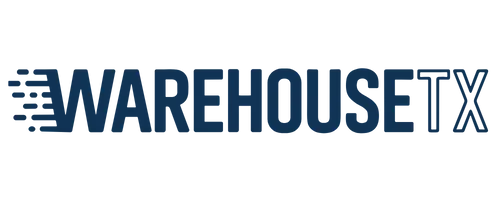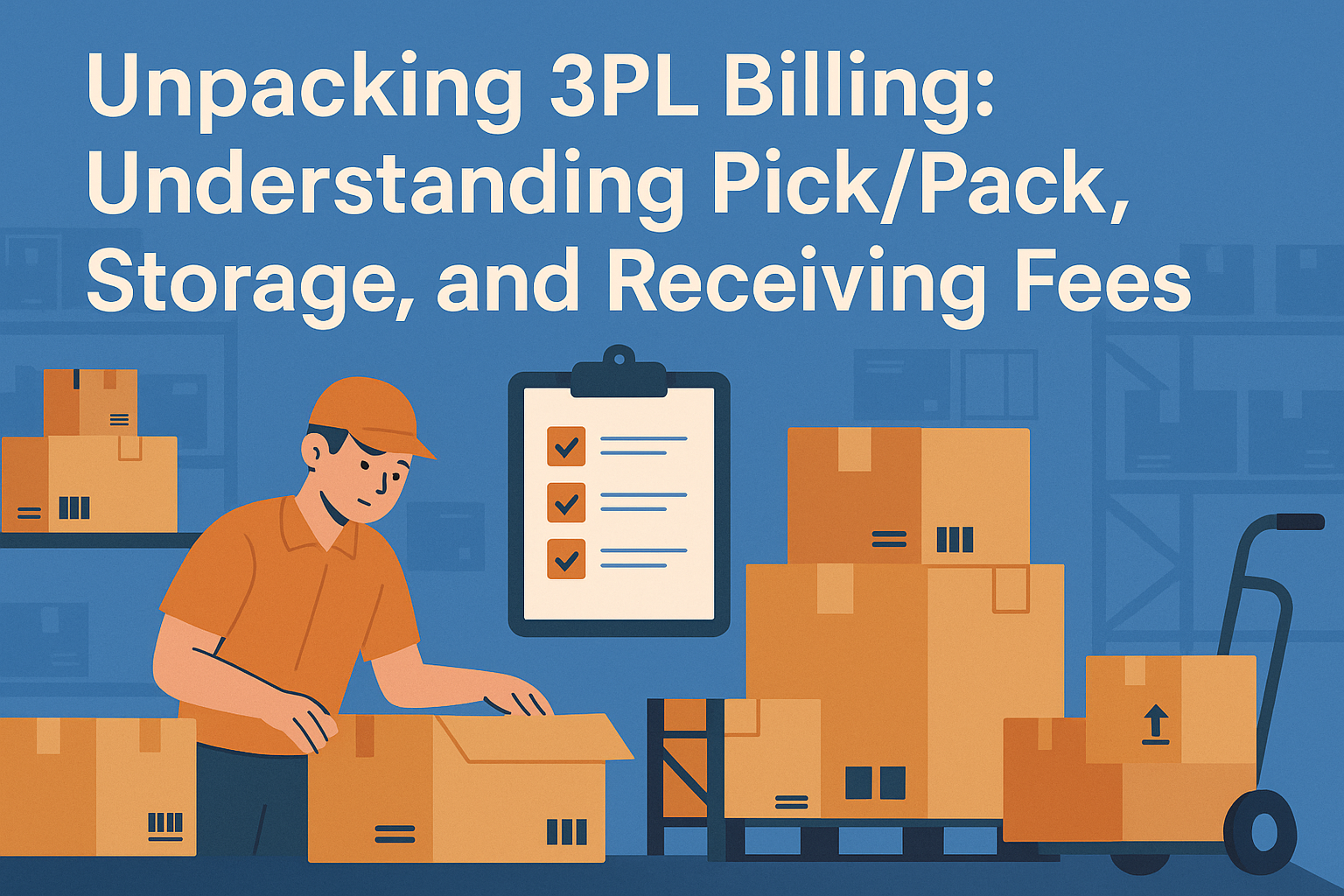This comprehensive guide will unpack each of these billing components, providing you with the knowledge to negotiate effectively, forecast your expenses accurately, and ensure you’re getting the best value for your logistics partnership. We’ll dive deep into real-world scenarios, compare different pricing models, and equip you with the insights of a seasoned logistics expert.
Unpacking the Core 3PL Billing Components
Think of your 3PL bill not as a one-size-fits-all charge but as a detailed breakdown of services rendered. Each fee reflects a specific stage in the fulfillment process, from the moment your inventory arrives at the warehouse to the final mile of delivery to your customer. Understanding these fees is the first step toward effective cost management.
The Pick/Pack Fee: The Engine of E-commerce Fulfillment
The pick/pack fee is perhaps the most direct cost associated with fulfilling a customer’s order. It covers the labor and materials involved in locating products, preparing them for shipment, and packing them securely. This fee is a direct reflection of the operational efficiency of your 3PL.
How Pick/Pack Fees are Calculated
There isn’t a single, universal pricing model for pick/pack. 3PLs use a variety of methods, and the one they choose can significantly impact your total cost. Here are the most common models:
- Per-Unit Pricing: This is the most straightforward model. You are charged a flat fee for every item picked and packed. For example, a 3PL might charge $1.50 per item. This is simple and easy to forecast, making it a favorite for businesses with a consistent order profile.
- Tiered Pricing: In this model, the per-unit price decreases as the number of items per order increases. A 3PL might charge $2.00 for the first item and $0.50 for each additional item. This model benefits brands with many multi-item orders.
- Fixed-Rate Pricing: Some 3PLs charge a fixed fee per order, regardless of the number of items. This can be beneficial for brands that primarily sell subscription boxes or bundles. For example, you might pay a flat $3.00 per order, whether it contains one product or five.
Case Study: The Impact of Pick/Pack Models
Let’s compare these models using a hypothetical e-commerce brand, “Glow Cosmetics,” which sells skincare products.
Scenario A: Per-Unit Model
Glow Cosmetics receives 100 orders in a day, with an average of 2 items per order (200 items total). The 3PL charges $1.00 per item.
Cost: 200 items * $1.00/item = $200.00
Scenario B: Tiered Model
The same 100 orders. The 3PL charges $1.50 for the first item and $0.50 for each additional item.
Cost: (100 orders * $1.50 for the first item) + (100 additional items * $0.50) = $150 + $50 = $200.00
In this simplified example, the costs are the same, but the calculation method highlights the importance of understanding your average order value. For a brand with a high average order value (AOV), a tiered model might be more cost-effective in the long run.
Storage Fees: Securing Your Inventory
Storage fees are a straightforward charge for the space your inventory occupies within the warehouse. This is a variable cost that fluctuates based on your inventory levels. High inventory turnover is your best friend here, as it minimizes the time your products spend on the shelf, thus reducing your storage costs.
How Storage Fees are Calculated
3PLs typically charge storage fees using one of the following methods:
- Per-Pallet: This is the most common method for larger, bulkier items. You are charged a monthly rate for each pallet your inventory occupies. For example, $30/pallet/month. This is great for brands with consistent, high-volume stock.
- Per-Shelf/Bin: Ideal for smaller items and brands with diverse SKUs. You are charged a fixed monthly fee for each bin or shelf space used. This offers a more granular level of control and can be more economical for certain product types.
- Per-Cubic-Foot: This model provides the most accurate reflection of the space your inventory occupies. A 3PL might charge $0.50 per cubic foot per month. This is highly beneficial for brands with irregularly shaped products.
Pro Tip: To minimize storage fees, focus on accurate demand forecasting. Avoiding overstocking not only frees up capital but also reduces your monthly storage expenses. Partner with a 3PL that offers advanced inventory management systems that provide real-time data to help you make smarter stocking decisions.
Receiving Fees: The Start of the Fulfillment Journey
Receiving fees cover the labor and resources required to accept, inspect, and process incoming inventory from your suppliers. This crucial step ensures that the right quantity and quality of products are ready for fulfillment. This fee can vary based on the complexity of the shipment.
How Receiving Fees are Calculated
Similar to other fees, receiving charges are not standardized. Common models include:
- Per-Pallet: A flat fee is charged for each pallet received. For example, $25/pallet. This is a common and predictable model.
- Per-Hour: Some 3PLs charge an hourly rate for the time it takes their staff to unload and process your shipment. This can be cost-effective for brands with well-organized, pre-labeled shipments.
- Per-Item/SKU: Less common but used by some 3PLs, this model charges a fee for each individual item or SKU received.
To keep receiving costs down, ensure your suppliers follow the 3PL’s receiving guidelines. Providing accurate manifests, using standardized pallet sizes, and pre-labeling cartons can significantly reduce the time and cost associated with this process.
Comparative Analysis: A Detailed Look at All Fees
To truly understand your 3PL costs, you must look at the big picture. Here’s a comparative table that breaks down the common fees and their impact on your business.
| Fee Type | Calculation Method | Best For | Tips for Minimizing Costs |
|---|---|---|---|
| Pick/Pack | Per-Unit, Tiered, or Fixed-Rate per order. | Businesses with high order volume and diverse SKUs. | Optimize your product packaging, bundle products, and streamline your SKUs. |
| Storage | Per-Pallet, Per-Bin, or Per-Cubic-Foot. | Businesses with stable or high-turnover inventory. | Implement just-in-time inventory strategies and use data analytics for accurate forecasting. |
| Receiving | Per-Pallet or Per-Hour. | Businesses with organized, predictable inbound shipments. | Provide clear ASNs (Advance Shipping Notices) and ensure your suppliers adhere to the 3PL’s guidelines. |
| Shipping | Based on carrier rates (negotiated by the 3PL) and dimensional weight. | All e-commerce businesses. | Use smaller, lighter packaging and leverage the 3PL’s negotiated carrier rates. |
| Return Management | Per-return or Per-hour for inspection. | Brands with high return rates. | Improve product descriptions and quality control to reduce returns. See our guide on Return Management for more details. |
Real-World Case Study: Optimizing 3PL Billing for an E-commerce Brand
Let’s follow the journey of “Active Gear,” a brand selling sportswear. They’ve partnered with a 3PL and want to optimize their costs.
Initial Situation: Active Gear’s 3PL charges per-unit pick/pack fees, per-pallet storage, and per-pallet receiving fees. Their average order contains 1-2 items, but they’ve recently introduced a new “Bundle & Save” promotion for complementary items (e.g., a jacket and leggings).
The Challenge: The pick/pack fee for the new bundle is a per-unit cost ($1.00/jacket + $1.00/leggings = $2.00 per bundle), which is higher than a single-item order. Additionally, their old inventory is sitting in the warehouse, accumulating storage fees.
The Solution:
- Negotiate Pick/Pack Fees: Active Gear meets with their 3PL partner and proposes a tiered or fixed-rate model for their new bundles. They show data proving the efficiency of picking these items together. The 3PL agrees to a discounted pick/pack fee of $1.50 per bundle, saving them $0.50 on every bundle order.
- Implement Kitting & Assembly: To further optimize, Active Gear requests a kitting service from their 3PL. The warehouse pre-assembles the bundles, so when a bundle order comes in, it’s treated as a single SKU. This reduces pick/pack time and labor, leading to even lower costs. See our blog on Unlocking E-commerce Efficiency with Kitting for more details.
- Optimize Inventory: By analyzing their inventory turnover data provided by the 3PL, Active Gear identifies slow-moving SKUs. They run a targeted promotion to clear this old stock, freeing up pallet space and reducing their monthly storage fees. They also implement a just-in-time (JIT) inventory system for their best-selling items.
The Result: By proactively managing their 3PL relationship and leveraging a deeper understanding of the billing structure, Active Gear reduced their fulfillment costs by an estimated 15% and improved their overall profitability. This case study demonstrates that a 3PL partnership is not passive; it requires active engagement and data-driven decisions.
Frequently Asked Questions About 3PL Billing
What is the difference between a per-order and a per-unit pick/pack fee?
A per-order fee charges a flat rate for each order, regardless of how many items are inside. A per-unit fee charges a flat rate for each individual item picked and packed. The best model for you depends on your average order size. If you have many single-item orders, a per-order fee might be more expensive, while a per-unit fee might be better. If you have multi-item orders, a per-order or tiered pricing model is often more cost-effective.
How can I reduce my 3PL storage fees?
To reduce storage fees, you need to optimize your inventory. Focus on accurate demand forecasting to avoid overstocking. Implement a first-in, first-out (FIFO) system to ensure older inventory is sold first. Consider a just-in-time (JIT) inventory strategy for high-turnover items. Partnering with a 3PL that offers multiple locations, like WarehouseTX’s nationwide network, can also help distribute your inventory closer to your customers, reducing storage time and shipping costs.
Are there any hidden fees to be aware of?
While reputable 3PLs are transparent, some lesser-known fees can catch you off guard. These might include inbound receiving fees for non-compliance with guidelines (e.g., mislabeled cartons), surcharges for oversized or hazardous materials, special handling fees for fragile items, or even minimum monthly billing fees. Always review your contract and ask for a complete breakdown of all potential charges before signing.
What is dimensional weight (DIM) and why is it important for 3PL billing?
Dimensional weight, or DIM weight, is a pricing method used by carriers that takes into account a package’s size as well as its weight. Carriers calculate the volume of a package and charge you based on the greater of the actual weight or the DIM weight. This is why a 3PL’s packaging expertise is so valuable. Using the right box size can significantly reduce your shipping costs, which are often your single largest logistics expense.
Final Thoughts: A Partnership, Not a Transaction
Understanding 3PL billing is more than just reading an invoice; it’s about forming a strategic partnership. The most successful e-commerce brands work closely with their logistics partners to identify cost-saving opportunities, optimize processes, and leverage technology. By demystifying fees like pick/pack, storage, and receiving, you can take control of your supply chain, boost your bottom line, and focus on what you do best: growing your brand.
Ready to streamline your logistics and take your business to the next level? Get a free quote from WarehouseTX today and discover how our transparent pricing and advanced fulfillment solutions can help you thrive.

